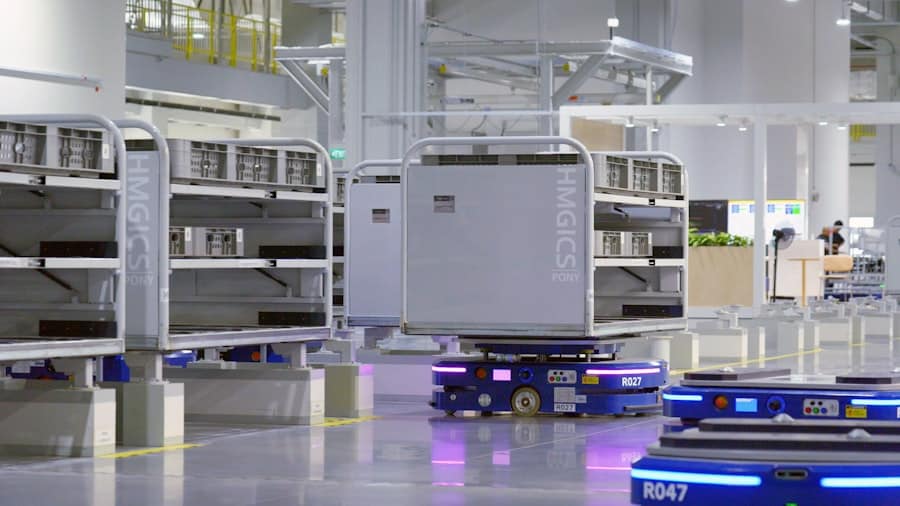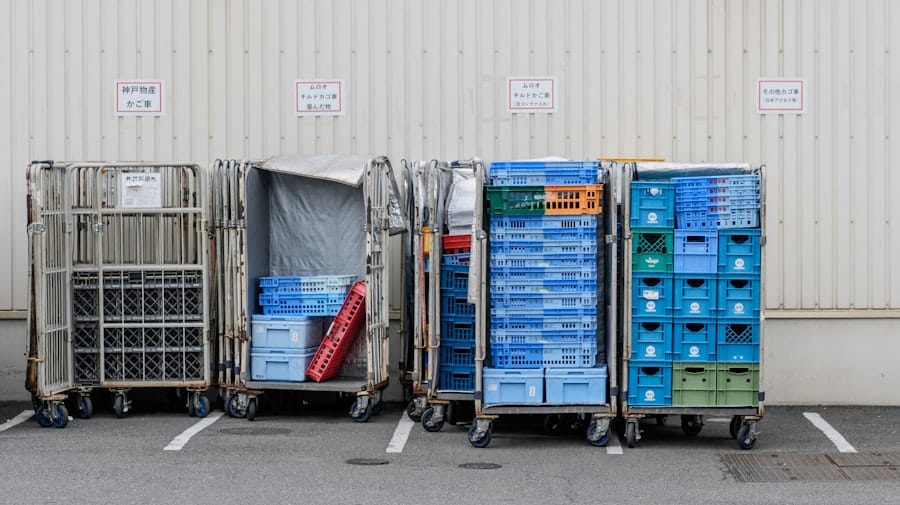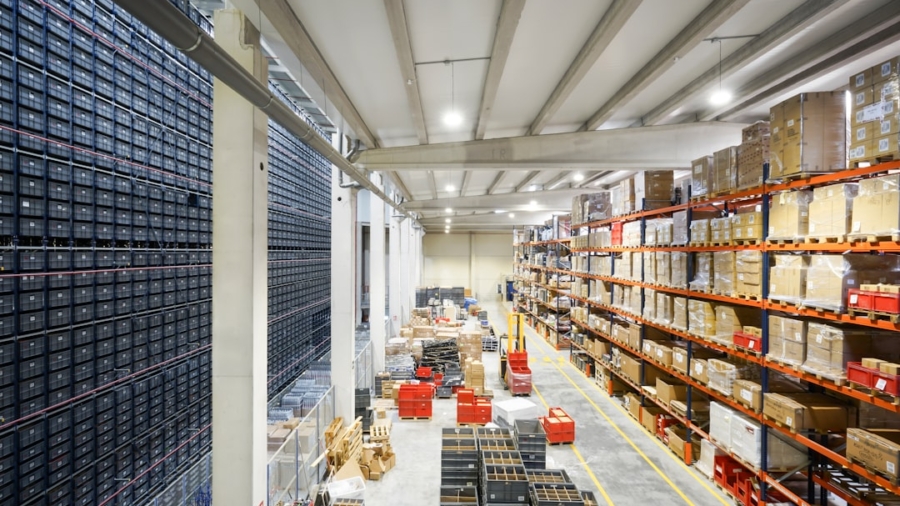Automated sorting systems have revolutionized the logistics and supply chain industries by introducing a level of efficiency that manual sorting processes simply cannot match.
For instance, in a typical warehouse setting, an automated sorting system can quickly identify and categorize packages based on size, weight, and destination.
This rapid processing capability significantly reduces the time taken to sort items, allowing for faster order fulfillment and improved overall operational efficiency. Moreover, the efficiency of these systems is not solely based on speed; it also encompasses the ability to operate continuously without the fatigue that human workers experience. Automated sorting systems can run 24/7, handling large volumes of packages without breaks or downtime.
This continuous operation is particularly beneficial during peak seasons when demand surges, as it ensures that logistics companies can meet customer expectations without compromising on service quality. The integration of machine learning algorithms further enhances efficiency by enabling the system to learn from past sorting patterns and optimize its operations accordingly.
Key Takeaways
- Automated sorting systems improve efficiency by streamlining the sorting process and reducing human error.
- Logistics companies can save costs by implementing automated sorting systems, as they require less manual labor and can handle higher volumes of packages.
- These systems offer high accuracy and precision in sorting, leading to fewer errors and improved customer satisfaction.
- Increased productivity and throughput are achieved through the faster and more efficient sorting of packages.
- Automated sorting systems can be integrated with other automated processes, creating a seamless and efficient workflow.
Cost Savings for Logistics Companies
The implementation of automated sorting systems can lead to substantial cost savings for logistics companies. One of the most significant areas of savings comes from reduced labor costs. By automating the sorting process, companies can minimize their reliance on manual labor, which not only cuts down on wages but also reduces expenses related to training, benefits, and employee turnover.
For example, a logistics company that previously employed dozens of workers for sorting tasks can replace them with a few automated systems, leading to a drastic reduction in operational costs. In addition to labor savings, automated sorting systems can also decrease the likelihood of errors that often lead to costly returns and re-shipments. When packages are sorted manually, the potential for human error is high; mislabeling or misplacing items can result in significant financial losses.
Automated systems, on the other hand, utilize precise algorithms and sensors to ensure that each package is sorted correctly the first time. This accuracy not only saves money but also enhances the overall efficiency of the supply chain, allowing companies to allocate resources more effectively.
Accuracy and Precision in Sorting

Accuracy is a critical factor in the logistics industry, where even minor mistakes can lead to significant disruptions in service. Automated sorting systems excel in this area by employing sophisticated technologies that ensure high levels of precision. For instance, many systems use barcode scanning and RFID technology to track packages throughout the sorting process.
This technology allows for real-time monitoring and verification of each item, ensuring that it is directed to the correct location without delay. The precision offered by automated sorting systems also extends to their ability to handle a wide variety of package types and sizes. Unlike manual sorting processes that may struggle with irregularly shaped items or varying weights, automated systems are designed to adapt to different package characteristics seamlessly.
This adaptability not only enhances accuracy but also minimizes the risk of damage during handling, as packages are sorted with care and precision.
Increased Productivity and Throughput
One of the most compelling advantages of automated sorting systems is their ability to significantly increase productivity and throughput within logistics operations. By automating repetitive tasks, these systems free up human workers to focus on more complex responsibilities that require critical thinking and problem-solving skills. As a result, companies can achieve higher output levels without compromising quality or service standards.
For example, a distribution center that implements an automated sorting system may see its throughput double or even triple compared to manual sorting methods. This increase in productivity allows companies to process more orders in less time, which is particularly advantageous during peak shopping seasons or promotional events when demand spikes. Furthermore, enhanced throughput contributes to improved inventory management, as items can be sorted and dispatched more quickly, reducing the likelihood of stockouts or overstock situations.
Integration with Other Automated Processes
The true power of automated sorting systems lies in their ability to integrate seamlessly with other automated processes within a logistics operation. For instance, these systems can be connected to inventory management software, order processing systems, and shipping platforms to create a cohesive workflow that enhances overall efficiency. This integration allows for real-time data sharing across various departments, ensuring that all stakeholders have access to up-to-date information regarding inventory levels, order statuses, and shipping schedules.
Additionally, automated sorting systems can work in conjunction with robotics and autonomous vehicles within warehouses and distribution centers. For example, once packages are sorted, robotic arms can pick them up and place them onto delivery trucks or conveyor belts for further processing. This level of integration not only streamlines operations but also reduces the potential for bottlenecks that can occur when different processes operate in isolation.
Adaptability to Changing Demands

In today’s fast-paced business environment, adaptability is crucial for success. Automated sorting systems are designed with flexibility in mind, allowing logistics companies to respond quickly to changing demands and market conditions. For instance, during unexpected surges in demand—such as those seen during holiday seasons or special promotions—automated systems can be adjusted to handle increased volumes without requiring significant changes to infrastructure or staffing levels.
Moreover, these systems can be programmed to accommodate new product lines or variations in packaging without extensive reconfiguration. This adaptability is particularly valuable for companies that frequently introduce new products or seasonal items, as it allows them to maintain efficient operations without incurring additional costs associated with retraining staff or modifying existing processes.
Reduction of Manual Labor
The shift towards automated sorting systems has led to a notable reduction in manual labor within logistics operations. While this transition may raise concerns about job displacement, it is essential to recognize that automation often leads to the creation of new roles focused on overseeing and maintaining these advanced systems. Workers who were previously engaged in repetitive sorting tasks can be retrained for more skilled positions that involve system management, data analysis, or customer service.
Furthermore, reducing manual labor not only enhances operational efficiency but also improves workplace safety. Sorting packages manually can be physically demanding and may expose workers to various hazards such as repetitive strain injuries or accidents caused by heavy lifting. By automating these tasks, companies can create a safer work environment while simultaneously increasing productivity.
Improved Customer Satisfaction
Ultimately, the implementation of automated sorting systems translates into improved customer satisfaction—a critical factor for any logistics company aiming for long-term success. With faster processing times and enhanced accuracy in order fulfillment, customers receive their packages more quickly and with fewer errors. This reliability fosters trust and loyalty among consumers who increasingly expect prompt service in today’s competitive market.
Additionally, automated sorting systems enable logistics companies to provide real-time tracking information to customers. By integrating these systems with customer-facing platforms, companies can offer updates on package status at every stage of the delivery process. This transparency not only enhances the customer experience but also reduces anxiety associated with online shopping, as consumers feel more informed about their orders.
In conclusion, automated sorting systems represent a transformative force within the logistics industry. Their efficiency, cost savings, accuracy, productivity enhancements, integration capabilities, adaptability, reduction of manual labor, and positive impact on customer satisfaction collectively position them as essential tools for modern supply chain management. As technology continues to evolve, it is likely that these systems will become even more sophisticated, further driving innovation and excellence in logistics operations worldwide.
These systems not only streamline the sorting process but also significantly reduce human error, leading to faster delivery times and improved customer satisfaction. A related article that delves into the technological advancements aiding various industries is Discover the Best AI Video Generator Software Today. This article explores how artificial intelligence is revolutionizing content creation, much like how automation is transforming logistics, highlighting the broader trend of AI integration across different sectors.
FAQs
What are automated sorting systems?
Automated sorting systems are advanced technology solutions used by logistics companies to streamline the process of sorting and organizing packages and goods. These systems use various technologies such as conveyor belts, sensors, and computer algorithms to automate the sorting process.
How do automated sorting systems benefit logistics companies?
Automated sorting systems help logistics companies improve efficiency, accuracy, and speed in their operations. These systems reduce the need for manual labor, minimize errors, and increase the overall throughput of packages, leading to cost savings and improved customer satisfaction.
What technologies are used in automated sorting systems?
Automated sorting systems utilize a combination of technologies such as barcode scanners, RFID (Radio Frequency Identification) systems, computer vision, and machine learning algorithms to identify, track, and sort packages. Conveyor belts, robotic arms, and automated guided vehicles (AGVs) are also commonly used in these systems.
How do automated sorting systems improve accuracy?
Automated sorting systems use advanced technologies to accurately identify and sort packages based on their destination, size, weight, and other parameters. This reduces the risk of human error and ensures that each package is directed to the correct location with precision.
What are the challenges of implementing automated sorting systems?
The implementation of automated sorting systems may require significant upfront investment in technology and infrastructure. Logistics companies also need to consider factors such as system integration, maintenance, and staff training to ensure a successful implementation. Additionally, adapting existing processes and workflows to accommodate automated systems can be a challenge.

